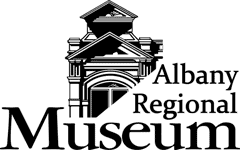By Cathy Ingalls, Albany Regional Museum board member
How did the cities, small towns and geographic areas around Albany get their names?
There are lots of different reasons and some of those answers appear in the book “Oregon Geographic Names” by Lewis A. McArthur and Lewis L. McArthur. Most of the information for this story is contained in that volume.
Albany Regional Museum Collection 2008200276
Albany: In 1847, brothers Walter and Thomas Monteith settled in the area after traveling by ox team along the Oregon Trail from New York. In 1848, they bought 320 acres from Hiram Smead for $400 and a horse. They plotted 60 acres for a town site and named the new city Albany after their Albany home in New York.
The town of Takenah began in 1849 near Albany and on Jan. 12, 1854, the legislature gave the name to both places. But in 1855, the legislature restored the name of Albany.
Knox Butte: The landmark has an elevation of 634 feet and is located about six miles east of Albany. It was named for James Knox, a pioneer of 1845 and a cousin of President James Knox Polk. There once was a train station nearby on the Southern Pacific Mill City line.
Talbot: The community located in Marion County was named for Guy W. Talbot, the first vice president and general manager of the Oregon Electric Railway Co. The Talbot railway station first was named Roby for a pioneer family that lived in the vicinity but the name was changed because of the confusion with the Ruby railroad station in Multnomah County. A post office was open in the community between February 1916 and September 1919.
Sidney: Located in Marion County, J. M. Wallace opened a flour mill in the area and named the community Sidney after his wife’s family name.
Scio: The town was named for Scio, Ohio, which in turn was picked for Chios, a Greek island off of the west coast of Turkey.
Orleans: The town was a city in Linn County that was established around 1850 but was destroyed in the Great Flood of 1862. It was not rebuilt. The cemetery survived because it was built on higher ground. Information about its name remains unavailable.
Waterloo: Elmore Kees built a sawmill and gristmill in the area near the falls on the South Santiam River. For a while, the community was known as Kees Mill. After Kees died, his widow leased the property to John F. Backensto. Litigation among the Kees heirs and others arose so John Ambler suggested the name Waterloo after a court decision was handed down.
Halsey: The town was named for William L. Halsey, vice president of the Willamette Valley Railroad Co. A railroad line was built through what is now Halsey in 1871 and the town received its name at that time.
Brownsville: The town situated on the Calapooia Rivet was laid out in 1853 and was named by James Blakely in honor of Hugh L. Brown, who opened the first store there.
Lacomb: J. E. Turnidge, a pioneer settler, liked the name Tacoma and tried to have postal authorities adopt it. But the name was too confusing with the city in Washington state so a compromise was reached with relative J. L. Turnidge in1889 and the town became Lacomb.
Tangent: The railroad station in the community on the Southern Pacific line south of Albany was named for the long stretch of straight track to the north and south, which is more than 20 miles long.
Holley: The post office at Holley was established in March 1890, and George W. Pugh, the first postmaster named the community after his home in Wisconsin.
Crawfordsville: The town on the Calapooia River was named by Philemon V. Crawford on whose property the city was built. Crawford and Robert Glass founded the town in 1870.
Jordan Valley: Tradition says that circuit rider Joab Powell named the area to honor the Jordan Valley in the Holy Land.
Shedd: The town first was called Boston Mills starting in September 1869. In August 1871 the name was changed to Shedds at the time when a railroad line was being built south from Albany. The site was named for Capt. Frank Shedd on whose land the community was started. The railroad changed the name to just Shedd in 1899.
More information about towns and communities in the area can be found at the Albany Regional Museum. The museum at 136 Lyon St. S can be reached at 541-967-7122 or go to info@armuseum.com.
The museum is open from 11a.m. to 4 p.m. Tuesday through Friday and 10 a.m.to 2 p.m. Saturday.


